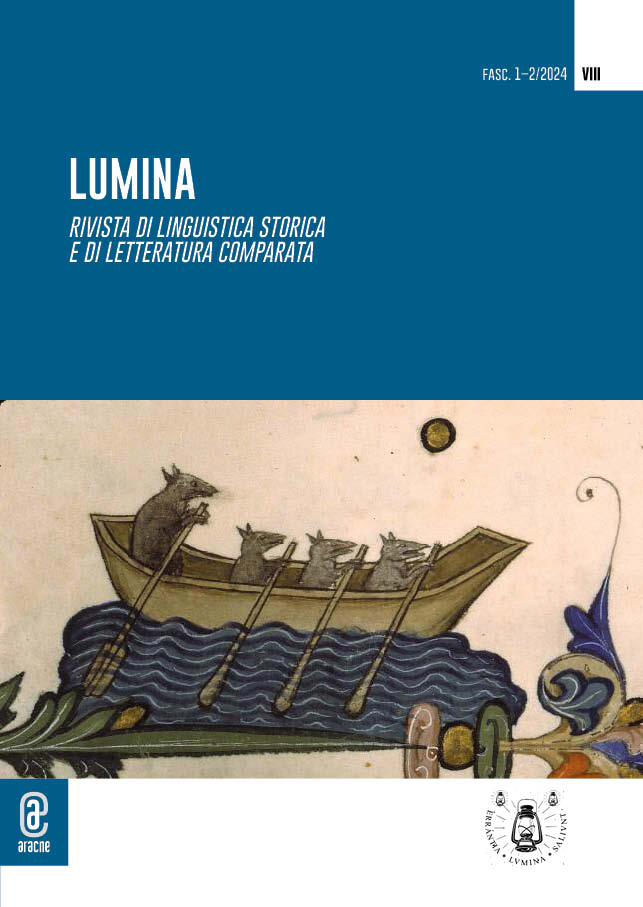Extracted from publication Lumina
«Quel che Timeo de l’anime argomenta»: variazioni su tema da Platone a Pound
DOI: 10.53136/97912218196492
Pages: 11-74
Publication date: June 2025
Publisher: Aracne
SSD:
L-FIL-LET/14 L-LIN/01
Questo è il primo tentativo che io abbia compiuto di riassumere la tradizione del Timeo come opera di linguaggio metaforico capace di spiegare la citazione che ne fa Dante nel canto IV del Paradiso, quando per un verso ne nega la verità letterale e per l’altro lo accosta alla Scrittura, che «piedi e mani / attribuisce a Dio e altro intende». Percorro perciò la via che dal trattato Sul Sublime conduce a Proclo, a Boezio, a Dionigi l’Areopagita, a Giovanni Scoto Eriugena sino ai grandi Scolastici del XIII secolo, e affronto il brano cruciale di Dante attraverso un’osservazione di Ezra Pound. Questo saggio mi porterà poi a comporre Timeo in Paradiso: metafore e bellezza da Platone a Dante (Donzelli, 2023).
This is the first attempt I ever made at summing up the tradition of Plato’s Timaeus as a work of metaphorical language capable of explaining the mention Dante makes of it in canto IV of Paradiso, when on the one hand he opposes the Timaeus’ literal meaning and on the other considers it close to Scripture, which «says that God / has hands and feet – though meaning otherwise». I therefore follow the route that leads from the treatise On the Sublime to Proclus, Boethius, Dionysius the Areopagite, John Scotus Eriugena down to the great Scholastics of the thirteenth century and examine Dante’s crucial passage using an observation by Ezra Pound. The present essay will bring me to write a volume, Timaeus in Paradise. Metaphors and Beauty from Plato to Dante and Beyond, the English version of which will be out with Princeton University Press in the Fall of 2025.


